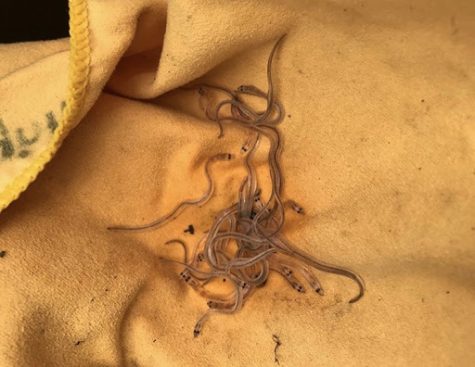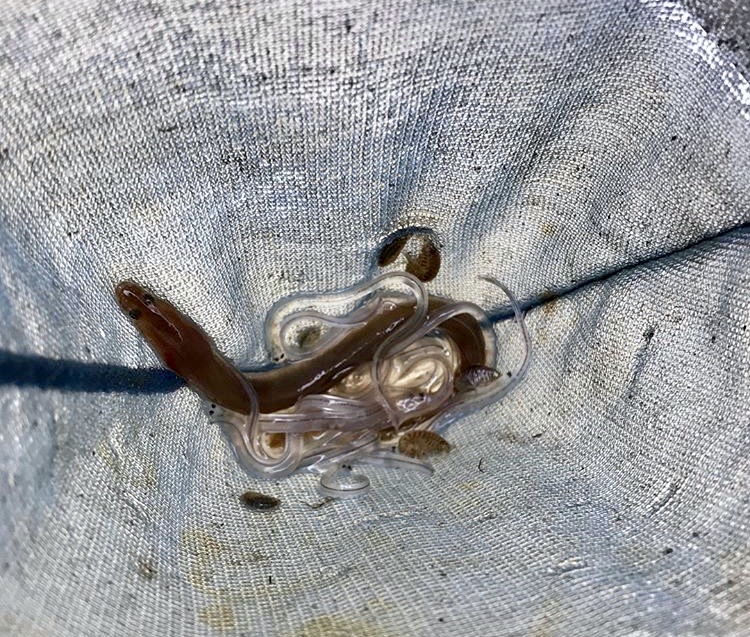DEC Glass Eel Project: A Great Idea for Community Service
DEC’s Hudson River Estuary Program counted the first glass eels of the season in the Saw Mill River in Yonkers on March 1st, and since then, eels have been showing up at Hudson River sampling sites farther north.
The American eel (Anguilla rostrata), a migratory fish, is hatched in the Sargasso Sea and enters North American estuaries, including the Hudson River, as juvenile glass eels each spring.
The name glass eel is given to the juvenile American eels to describe the fishes’ lack of pigment and near transparency.

The species is in decline over much of its range, and we need baseline studies for conservation. Now in its 12th year, the DEC Glass Eel project recruits teams of scientists, students, and community members to participate in tracking the species recovery.
The teams collect glass eels using specialized nets and traps (fyke nets and eel ‘mops’) on Hudson River tributaries each spring. Volunteers count the juvenile fish one-by-one, weigh them in groups, and release them upstream. Volunteers also collect data on water temperature and water-quality.
In late February, DEC Employee and eel enthusiast, Aidan Mabey came to speak to Rhinebeck High School students at length about the project, even bringing live eels for students to examine! This exciting precursor to the eel project helped to build excitement and awareness about the project and state of the American eel.
This is my second year volunteering as part of the eel project, and I can attest it was one of the best decisions I have made in my high school career. Completing about 40 hours of service between the glass eel project and occasional work on a separate eel ladder project throughout the summer, I found this to be an interesting and fun way to fulfill RHS’s mandatory community service requirements.
Studying the eels is always exciting and engaging. Throughout my time volunteering at the Norrie Point location on the Ender Kill in Staatsburg last spring, I watched the river transform from a frigid and barren stream with the occasional eel or two to an extravagant and flourishing habitat where we would catch 50+ eels daily.
If this sounds interesting to you grab some friends and come catch some eels!
For more information, visit DEC’s American Eel Research web page or contact: [email protected] or [email protected].






